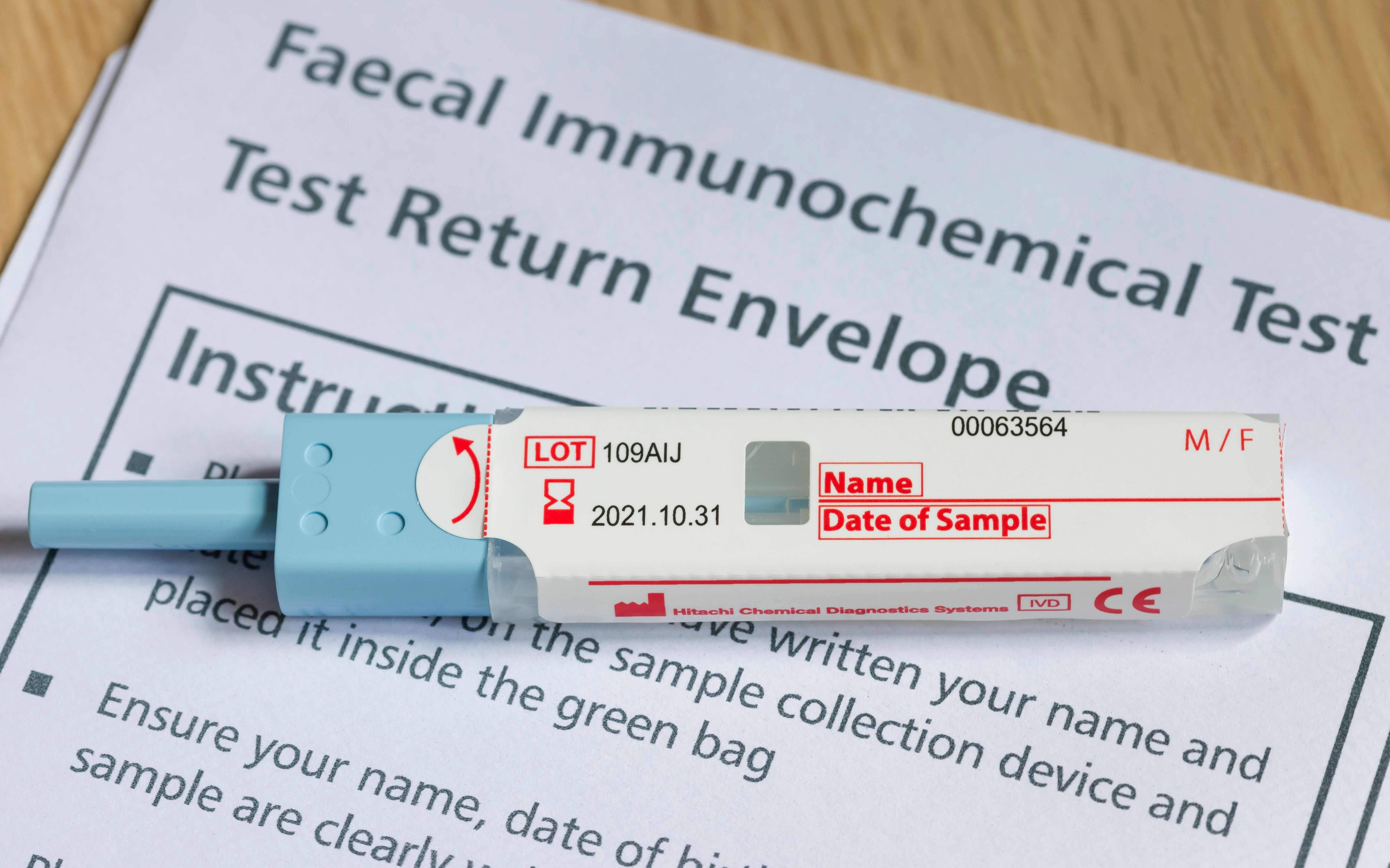- Center on Health Equity & Access
- Clinical
- Health Care Cost
- Health Care Delivery
- Insurance
- Policy
- Technology
- Value-Based Care
Commercial FIT Capable of Similar Diagnostic Results as New Stool DNA Test
Lowering the positivity threshold for a high-quality fecal immunochemical test (FIT) can increase sensitivity of noninvasive screening for colorectal cancer in a more economical way.
Commercial fecal immunochemical tests (FIT) could achieve similar diagnostic results compared with the new stool DNA test, which is in line with the first generation of stool DNA and multitarget stool RNA testing, according to new research published in JAMA Internal Medicine.1 Research on enhancing specificity and sensitivity in noninvasive screening methods can help in identifying colorectal cancer (CRC) earlier and improving prognosis.
FITs are highly popular noninvasive screening tools for CRC, as it is more accessible for patients who aren’t local to a clinic that can perform colonoscopies or who are at lower risk of CRC. The FIT is able to determine whether an individual should follow up with a colonoscopy by detecting any hidden blood in stool.2 A multitarget stool DNA test (MSDT) was found to have a higher sensitivity compared with commercial FIT in a previous screening study but the sensitivity benefits were outweighed by the decrease in specificity. Next-generation MSDT (NG-MSDT) had similar results, with high sensitivity and low specificity. This study aimed to evaluate whether decreasing the positivity threshold of a commercial FIT could make it comparable to a NG-MSDT.
Altering positivity cutoffs could make FIT capable of similar diagnostic results as new testing | Image credit: Paul Maguire - stock.adobe.com

The analysis was conducted in the spring of 2024 and all participants were from the BLITZ study and the BLUE-C study, conducted in Germany. All participants were recruited for that study between 2008 and 2020. Participants were excluded from the current study if they had a history of CRC or inflammatory bowel disease, were aged less than 40 years, had a colonoscopy less than 10 years prior, had an incomplete colonoscopy, had inadequate bowel preparation, had unspecified polyps on their colonoscopy report, or had stool sampling after the colonoscopy.
Participant characteristics were compared between the BLUE-C study and the BLITZ study. FIT sensitivities for any CRC, CRC stages I to III, any advanced neoplasm, and any advanced precancerous lesion were extracted in order to detect them in the test. Diagnostic performance for the FIT were also assessed based on the manufacturer’s recommendation.
There were 7190 participants included in the study, with the mean age of the Blitz study being 61.3 years and the mean age of the BLUE-C study participants being 63.0 years. Both studies had more women included compared with men (51.6% and 53.2%, respectively).
The cutoff recommendation from the manufacturer was 17 μg/g, which led to lower sensitivities for the FIT in BLITZ and higher specificity than the NG-MSDT in BLUE-C. When the cutoff of the FIT was lowered to 11.7 μg/g, slightly higher sensitivity was found in CRC (94.7% vs 93.9%), slightly lower sensitivity was found in advanced precancerous lesions (38.3% vs 43.4%), and specificity was comparable. A slightly higher sensitivity of 96.5% for CRC was found when the FIT cutoff was lowered to 10 μg/g, along with the same sensitivity for advanced neoplasia (45.4%), and slightly lower specificity (89.0%) compared with NG-MSDT.
This study was limited due to it being an indirect comparison. However, the researchers concluded that commercial FIT could have similar results to the NG-MSDT when lowering the positivity threshold and could be a more economical way of increasing sensitivity in noninvasive methods of screening.
References
- Seum T, Niedermaier T, Heisser T, Hoffmeister M, Brenner H. Next-generation multitarget stool DNA vs fecal immunochemical test in colorectal cancer screening. JAMA Intern Med. Published online November 18, 2024. doi:10.1001/jamainternmed.2024.6149
- Phillips MM. Fecal immunochemical test (FIT). MedlinePlus. Updated August 8, 2023. Accessed November 19, 2024. https://medlineplus.gov/ency/patientinstructions/000704.htm
